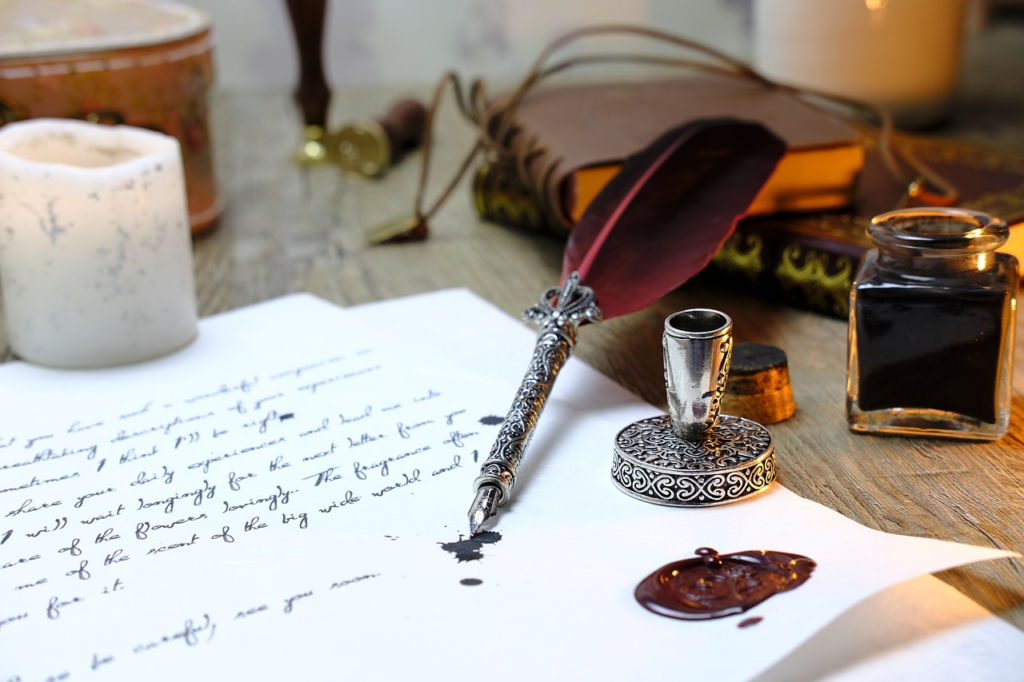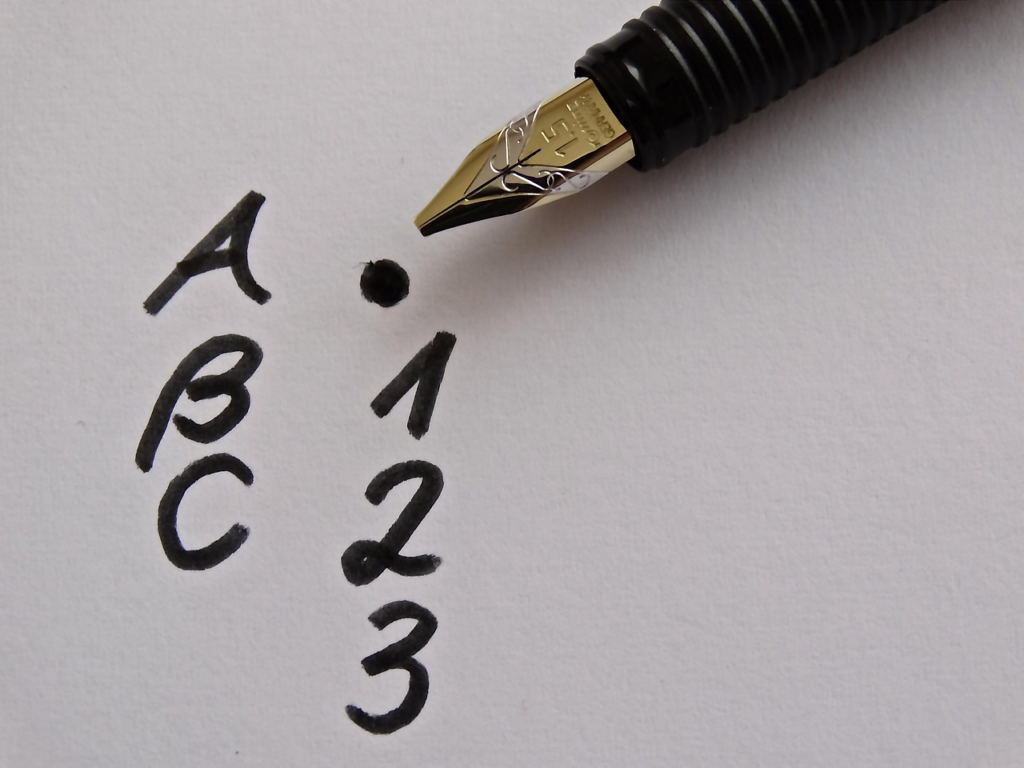By P. Koshy
In an era of digital convenience — where typing on laptops, tablets, and smartphones is second nature — the fountain pen may seem like a relic of the past. Yet for students, writers, collectors, and professionals, it remains a meaningful tool for writing, thinking, and creative expression. In fact, in recent years, fountain pens have witnessed a quiet resurgence among those seeking depth, clarity, and a tangible connection to their thoughts.
The story of the fountain pen
The story of the fountain pen begins with ancient writing tools such as reed pens and quills used in Egypt, Greece, and medieval Europe. These early instruments had to be dipped repeatedly into ink. The need for a more efficient, self-contained writing instrument led to several innovations.
The first known reference to a reservoir pen dates back to the 10th century, but it wasn’t until the 19th century that the modern fountain pen took form. In 1827, Romanian inventor Petrache Poenaru received a patent for a fountain pen with a self-feeding ink system. Subsequent innovations, including Lewis Waterman’s reliable feed mechanism in the 1880s, laid the groundwork for the mass production of fountain pens in the early 20th century.
By the mid-1900s, fountain pens were the standard writing tool in schools, offices, and homes. Ballpoint pens began to overtake them due to their convenience, but fountain pens never fully disappeared — and today, they are appreciated as purposeful writing instruments.

Makers of Tradition and Innovation
Fountain pen manufacturing today balances tradition with modern design. Several global brands have become synonymous with excellence:
- Montblanc (Germany) – Known for its flagship Meisterstück 149, Montblanc pens are crafted with precision and often used for signatures and formal writing.
- Pelikan (Germany) – Innovators of the piston-filling mechanism, Pelikan’s Souverän series remains a favourite among experienced users.
- Parker (USA/UK) – Founded in 1888, Parker’s legacy includes the legendary Parker 51, a pen that became a global icon.
- Waterman (France) – With roots tracing back to 1884, Waterman pioneered capillary feed systems and elegant designs.
- Pilot and Platinum (Japan) – Offer superb craftsmanship with models like the Pilot Custom 823 and Platinum Century 3776.
- LAMY (Germany) – Celebrated for its Bauhaus-inspired designs, LAMY pens like the Safari and AL-star are popular with students and professionals alike.
- Hero (China) – Once a staple in Indian schools, Hero pens like the Hero 329 and 616 still attract budget-conscious users.
- TWSBI (Taiwan) – A modern brand praised for its transparent pens and piston fillers.
In India, Airmail (Wality), Ranga Pens, and Guider Pens continue to produce handcrafted ebonite and acrylic models, often aimed at collectors and connoisseurs. Camel and Wilson, once common in school kits, are now niche or defunct.

Ink: The Soul of a Fountain Pen
Fountain pen ink comes in two main forms: cartridges and bottled ink. While cartridges offer convenience, bottled ink provides variety, cost-effectiveness, and sustainability.
Notable ink manufacturers include:
- Diamine (UK) – Known for hundreds of shades, including shimmer inks.
- Pilot Iroshizuku (Japan) – Famous for rich, nature-inspired colours.
- Pelikan 4001 (Germany) – Offers classic, reliable inks.
- J. Herbin (France) – One of the oldest ink producers, established in 1670.
- Noodler’s (USA) – Produces inks with unique properties: waterproof, fraud-resistant, etc.
In India, Bril, Sulekha, and Daytone provide quality bottled inks at affordable prices. These inks remain popular among school users, government offices, and fountain pen communities.
Who Uses Fountain Pens Today?
While their mainstream use has declined, fountain pens continue to serve diverse users:
- Students – Though less common today, some schools still recommend fountain pens for better handwriting.
- Journal writers and diarists – Value the tactile nature of pen-on-paper writing.
- Authors and academics – Often use them for drafting, annotating, or long-form writing.
- Lawyers, notaries, and government officials – Use fountain pens for official signatures and correspondence.
- Calligraphers and illustrators – Use fountain pens and dip pens for artistic work.
- Collectors and hobbyists – Exchange, display, and review fountain pens through global communities and pen shows.
In India, fountain pens are still used in government offices, especially for signing documents. The Indian Civil Services, for instance, have traditionally included a fountain pen in their stationery kits.
Digital vs. Fountain Pen: A Cognitive Perspective
Typing may be faster, but science supports the mental benefits of handwriting — especially with tools like fountain pens. Studies from Princeton and UCLA have shown that students who take notes by hand tend to retain more information and understand content better than those who type.
Key cognitive benefits include:
- Improved memory and comprehension – Handwriting activates the reticular activating system (RAS), which helps focus attention and enhance memory.
- Fine motor development – Especially in children, writing with a pen improves hand–eye coordination and dexterity.
- Increased creativity – Slower writing encourages reflective thinking and creative ideation.
- Better emotional regulation – Journaling with a fountain pen can reduce anxiety, offering a sense of rhythm and mindfulness.
- Visual and spatial learning – Handwritten notes involve diagramming and mind-mapping, which aid deeper understanding.
Fountain pens, in particular, demand a controlled grip and even pressure, which slows the pace and enhances focus — qualities that benefit both young learners and adult professionals.
In today’s fast-moving, screen-driven world, using a fountain pen is a quiet but powerful act of intention. It offers an alternative to the fleeting nature of digital text — reminding us that writing can be a thoughtful, personal, and even enjoyable process.
From boardrooms to classrooms, from personal letters to poetry, fountain pens offer something unique: permanence, presence, and a physical link between mind and hand.
Whether you’re a student, a CEO, or a poet, the fountain pen invites you to write not just faster, but better — with clarity, with care, and with purpose.








